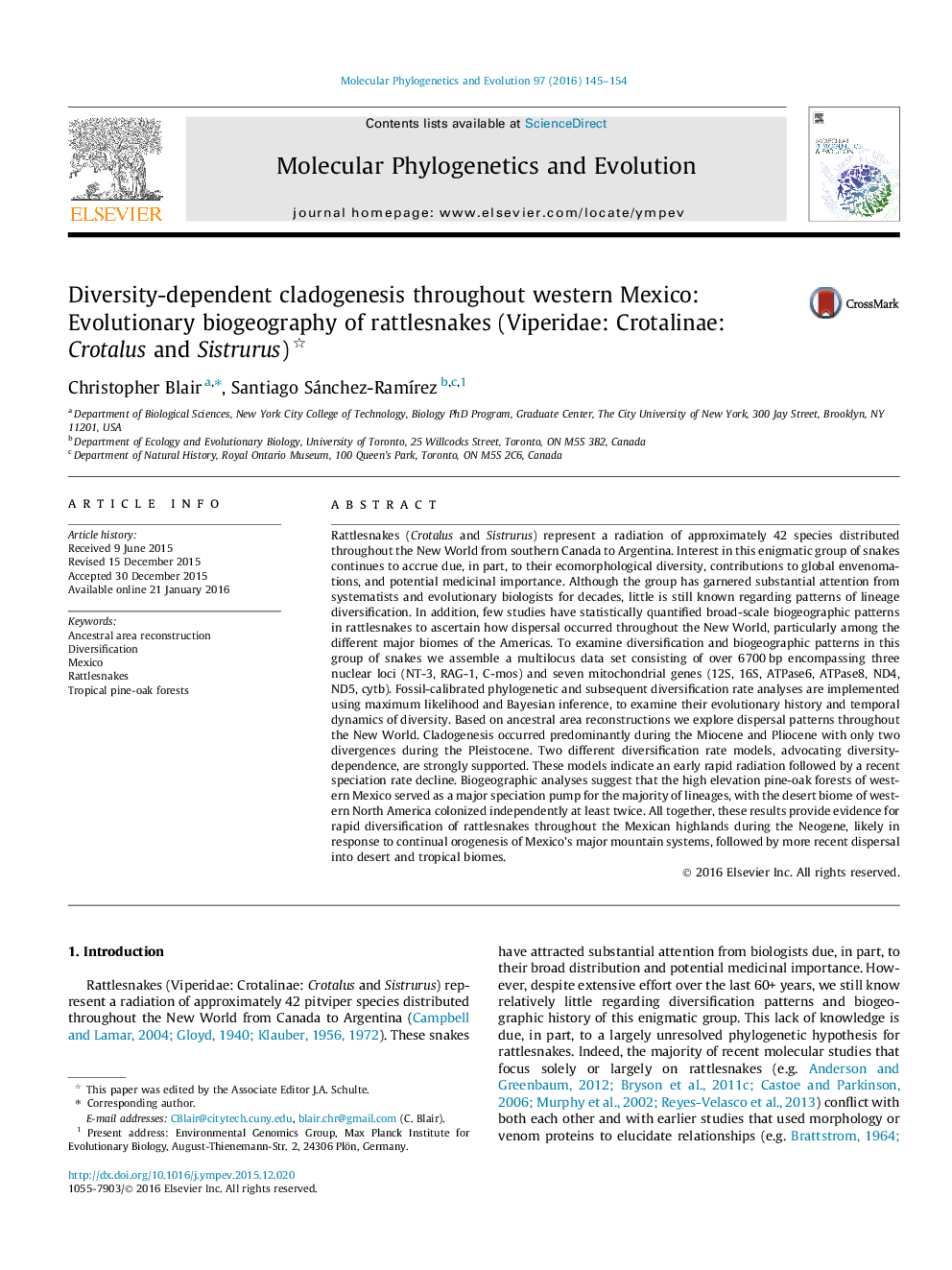| کد مقاله | کد نشریه | سال انتشار | مقاله انگلیسی | نسخه تمام متن |
|---|---|---|---|---|
| 2833701 | 1570800 | 2016 | 10 صفحه PDF | دانلود رایگان |

• Orogenesis of Mexican highlands in Neogene important for rattlesnake diversification.
• Diversity-dependent diversification explains recent declines in speciation rates.
• Rapid speciation throughout Mexican pine-oak forest, with deserts of western North America colonized twice.
• Recent invasion into tropical Central and South America.
Rattlesnakes (Crotalus and Sistrurus) represent a radiation of approximately 42 species distributed throughout the New World from southern Canada to Argentina. Interest in this enigmatic group of snakes continues to accrue due, in part, to their ecomorphological diversity, contributions to global envenomations, and potential medicinal importance. Although the group has garnered substantial attention from systematists and evolutionary biologists for decades, little is still known regarding patterns of lineage diversification. In addition, few studies have statistically quantified broad-scale biogeographic patterns in rattlesnakes to ascertain how dispersal occurred throughout the New World, particularly among the different major biomes of the Americas. To examine diversification and biogeographic patterns in this group of snakes we assemble a multilocus data set consisting of over 6700 bp encompassing three nuclear loci (NT-3, RAG-1, C-mos) and seven mitochondrial genes (12S, 16S, ATPase6, ATPase8, ND4, ND5, cytb). Fossil-calibrated phylogenetic and subsequent diversification rate analyses are implemented using maximum likelihood and Bayesian inference, to examine their evolutionary history and temporal dynamics of diversity. Based on ancestral area reconstructions we explore dispersal patterns throughout the New World. Cladogenesis occurred predominantly during the Miocene and Pliocene with only two divergences during the Pleistocene. Two different diversification rate models, advocating diversity-dependence, are strongly supported. These models indicate an early rapid radiation followed by a recent speciation rate decline. Biogeographic analyses suggest that the high elevation pine-oak forests of western Mexico served as a major speciation pump for the majority of lineages, with the desert biome of western North America colonized independently at least twice. All together, these results provide evidence for rapid diversification of rattlesnakes throughout the Mexican highlands during the Neogene, likely in response to continual orogenesis of Mexico’s major mountain systems, followed by more recent dispersal into desert and tropical biomes.
Figure optionsDownload as PowerPoint slide
Journal: Molecular Phylogenetics and Evolution - Volume 97, April 2016, Pages 145–154